Potřebujeme váš souhlas k využití jednotlivých dat, aby se vám mimo jiné mohly ukazovat informace týkající se vašich zájmů. Souhlas udělíte kliknutím na tlačítko „OK“.
ASTM D7481-09
Standard Test Methods for Determining Loose and Tapped Bulk Densities of Powders using a Graduated Cylinder (Withdrawn 2018)
Automaticky přeložený název:
Standardní zkušební metody pro stanovení Loose a sypné hustoty prášky pomocí odměrného válce
NORMA vydána dne 1.10.2009
Informace o normě:
Označení normy: ASTM D7481-09
Poznámka: NEPLATNÁ
Datum vydání normy: 1.10.2009
Kód zboží: NS-38570
Počet stran: 4
Přibližná hmotnost: 12 g (0.03 liber)
Země: Americká technická norma
Kategorie: Technické normy ASTM
Kategorie - podobné normy:
Anotace textu normy ASTM D7481-09 :
Keywords:
loose bulk density, tapped bulk density, ICS Number Code 17.060 (Measurement of volume, mass, density, viscosity)
Doplňující informace
| Significance and Use | ||||||||||||||||||||||||
|
The data from the loose bulk density test can be used to estimate the size of bags, totes, small bins or hoppers for the storage of a fixed mass of powder in its loose condition. It can also be used to estimate the mass of powder that will fit in small size containers such as drums. It cannot be used to estimate powder quantities of large vessels such as silos. Values of loose bulk density obtained using this test method should be used with caution, since they can vary considerably depending on the inital state of dispersion of the test specimen, height-to-diameter ratio of specimen in graduated cylinder, dryness of powder, and other factors. The data from the tapped bulk density test can be used to estimate the needed volume of small containers holding a fixed mass of powder that has been compacted. An example would be a packing line where vibration is used to tamp powders into a small container for effective packing purposes. Bulk density values can vary significantly if the particle size of the actual material to be handled is different than tested. A bulk solid consisting of large and small particles often has higher bulk densities than the fine particles by themselves. For powders, lower densities are possible if the fine particles are fluidized or aerated. The results of this test method are most applicable to containers with volumes up to about one cubic meter. Another method (such as D 6683) should be used when considering larger silos. Note 1—The quality of the results produced by this standard is dependent on the competence of the personnel performing it, and the suitability of the equipment and facilities used. Agencies that meet the criteria of Practice D 3740 are generally considered capable of competent and objective testing/sampling/inspection/etc. Users of this standard are cautioned that compliance with Practice D 3740 does not in itself assure reliable results. Reliable results depend on many factors; Practice D 3740 provides a means of evaluating some of those factors. Practice D 3740 was developed for agencies engaged in the testing or inspection (or both) of soil and rock. As such it is not totally applicable to agencies performing this standard. However, users of this standard should recognize that the framework of Practice D 3740 is appropriate for evaluating the quality of an agency performing this standard. Currently there is no known qualifying national authority that inspects agencies that perform this standard. |
||||||||||||||||||||||||
| 1. Scope | ||||||||||||||||||||||||
|
1.1 This test method covers the apparatus and procedures for determining the bulk densities of free flowing and moderately cohesive powders and granular materials up to 3.5 mm in size in their loose (Method A) and tapped (Method B) states. 1.2 This test method should be performed in a laboratory under controlled conditions of temperature and humidity. 1.3 This test method is similar to those of Test Methods B 212, D 29, and D 2854. 1.4 All observed and calculated values shall conform to the guidelines for significant digits and rounding established in Practice D 6026. 1.4.1 The procedures used to specify how data are collected/recorded or calculated in this standard are regarded as the industry standard. In addition they are representative of the significant digits that generally should be retained. The procedures used do not consider material variations, purpose for obtaining the data, special purpose studies, or any considerations for the user’s objectives; and it is common practice to increase or reduce significant digits of reported data to be commensurate with these considerations. It is beyond the scope of this standard to consider significant digits used in analysis methods for engineering design. 1.5 The values stated in SI units are to be regarded as standard. No other units of measurement are included in this standard. 1.6 This standard does not purport to address all of the safety concerns, if any, associated with its use. It is the responsibility of the user of this standard to establish appropriate safety and health practices and determine the applicability of regulatory limitations prior to use. |
||||||||||||||||||||||||
| 2. Referenced Documents | ||||||||||||||||||||||||
|
Podobné normy:
Historická
1.5.2014
Historická
1.11.2013
Historická
1.1.2013
Historická
1.10.2009
Historická
1.8.2014
Historická
1.3.2013
Doporučujeme:
EviZak - všechny zákony včetně jejich evidence na jednom místě
Poskytování aktuálních informací o legislativních předpisech vyhlášených ve Sbírce zákonů od roku 1945.
Aktualizace 2x v měsíci !
Chcete vědět více informací? Podívejte se na tuto stránku.



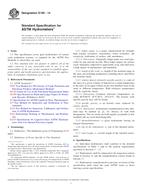 ASTM E100-14
ASTM E100-14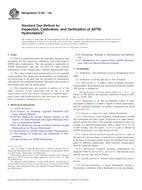 ASTM E126-13a
ASTM E126-13a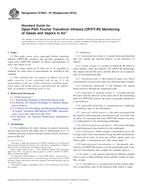 ASTM E1865-97(2013)..
ASTM E1865-97(2013)..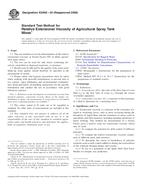 ASTM E2408-04(2009)..
ASTM E2408-04(2009)..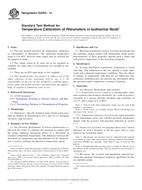 ASTM E2509-14
ASTM E2509-14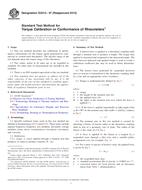 ASTM E2510-07(2013)..
ASTM E2510-07(2013)..
 Cookies
Cookies
